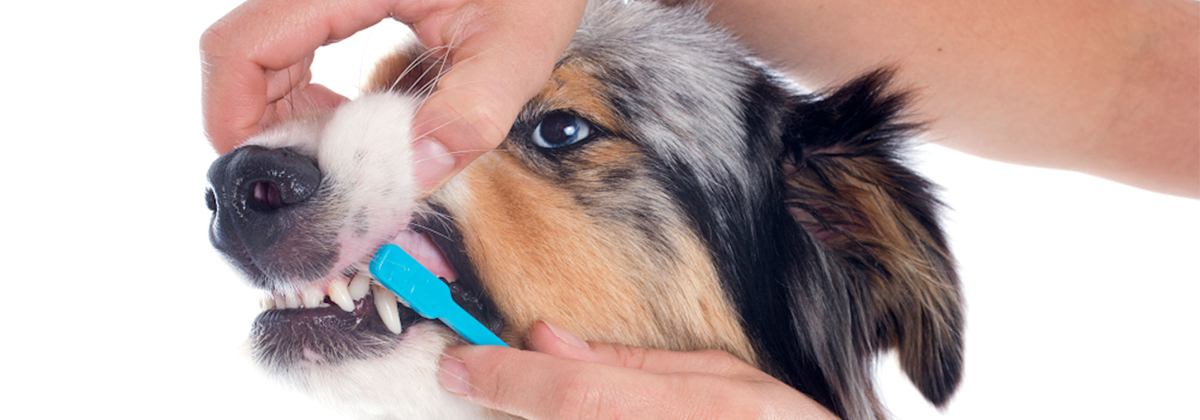13 Mar Periodontal problems in Dogs: how to solve?
Periodontal problems in dogs are a deep and serious problem that is usually much more severe than the symptoms. Because of its danger, you should prevent it from occurring in your dog. 80% of dogs get this disease from the age of 3, which is an unfortunate and disturbing statistic. Periodontal disease is a painful and immune-debilitating disease of the mouth. This article will explain the cause of the disease and simple methods to eliminate it to reduce tartar on their teeth and prevent this disease.
Plaque is an invisible layer of bacteria on the teeth removed by regular brushing (or abrasion of hard foods). Tartar is also a hard yellow layer on the teeth. Many people think that this disease’s biggest symptom is jaundice, but this is only a small part of the story. Tartar is made on the gums because the gums are full of capillaries, and this bacterium attacks the blood. Blood reaches the heart and brain directly. Therefore, the body defends the body through the immune system. Antibodies go to the gum line and swell the area. Therefore, the area around your dog’s gums is also affected, which causes him pain. Periodontal disease, the dark red line on the gums, is just above the teeth. It is a chronic disease that reduces the dog’s immune system’s strength and damages the gums and teeth.
Symptoms of Periodontal problems in dogs:
If Periodontal disease progresses, the body may no longer be able to fight the disease. Cracks appear in the gum line, and bacteria enter the bloodstream. These bacteria travel through the body with the bloodstream and cause inflammation in other important places such as blood vessels, kidneys, heart and brain. As a result, the body becomes tired and reacts strongly.
For this reason, gingivitis in dogs is directly related to lung, heart and kidney disease because weak kidneys are responsible for clearing and purifying the blood. If the small tubes become blocked, major kidney problems can occur. When the immune system is weak, various diseases enter the body that the body cannot fight. In addition to the problems mentioned above, Periodontal disease also has the following symptoms:
- Halitosis (bad breath)
- Pain or difficulty eating
- Weight Loss
- Plaque and tartar
- Red, inflamed, bleeding gums
- Loose, missing or broken teeth
- Excess saliva
- I prefer soft food for biscuits.
- Swelling of the face
- Clawing and rubbing the mouth or face
- Blood-stained saliva
Causes of Periodontal problems in dogs:
- Type of dog food: Dry food is the cause of most periodontal diseases in dogs; Because this type of food doesn’t cause abrasion on the teeth, and the carbohydrates in it cause plaque to grow; Because dogs are carnivores and don’t have amylase in their saliva. Amylase is an enzyme that removes carbohydrates (such as sugar) from teeth.
- Age: Facial makeup and old age can also be effective in the spread of this disease. But the effect of dry food is a more important and pervasive cause.
- Various pet store foods or dental sticks: These dental sticks are like bones and contain sugar. It tastes and feels like bone, too, and yet you no longer need a toothbrush.
- Poor dental hygiene: Brush your dog’s teeth to prevent daily problems.
- Breed: Some breeds suffer more from the dental disease than other dogs, which is often due to the shape of their mouth; their mouth is very narrow. These breeds include the Yorkshire Terrier, Greyhound, Whippets (and other hounds), Cavalier King Charles Spaniels, Pug, Bulldog, Shi Tzus.
- Baby teeth: A dog’s baby teeth fall out at about 4 months of age, and their adult teeth begin to grow. If their baby teeth don’t fall out, dental problems can be caused by congestion in the mouth.
Treatments:
If your dog has periodontal disease, only put him under general anaesthesia if it’s serious. His teeth are eroding because this anaesthesia and surgery are dangerous for small, old and sick dogs. Instead, you can try the following solutions.
- Use of fresh food: The cause of most periodontal diseases in dogs is dry food. Give your dog soft, chewy food instead of dry ones.
- Fleshy bones: Bones are a dog’s natural toothbrush. Give a dog a bone. It is best to give your dog a bone that still has meat on it.
- Dog mouthwash: You can add a special mouthwash to your dog’s drinking water to keep his mouth clean. Never use human mouthwash for your dog.
- Anti-Inflammatory Pain Relief: Your veterinarian may prescribe a non-steroidal anti-inflammatory pain reliever for the comfort of your dog’s mouth.
- Antibiotics: Antibiotics are also often needed to fight infection.
- Brushing: With regular brushing, remove plaque before it turns into solid tartar.
- Dental toys: Chewing dental toys can clean teeth and gums.
- Regular dental checkups: Regular visits to your veterinarian can help diagnose dental problems before they become serious. The best time to check your dog’s teeth is for their annual vaccinations.
Maintaining dogs, oral health is critical. As mentioned, if this bacterium enters the bloodstream, there is a possibility of problems and other diseases in your dog. Our expert team in Mishka has the best methods and tools for cleaning your dog’s teeth and sets the best hours and moments for your dear dog. Your dog will feel comfortable in our friendly and fun environment, and in addition to maintaining the health and hygiene of his teeth, we will also strengthen his mental health.




No Comments